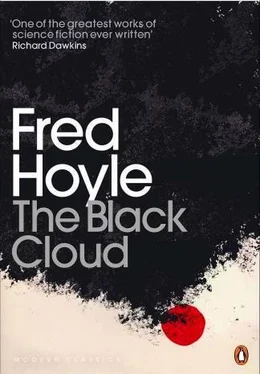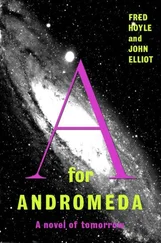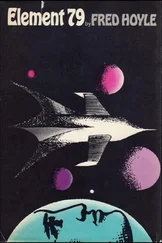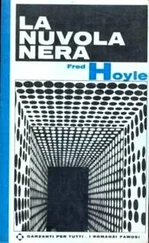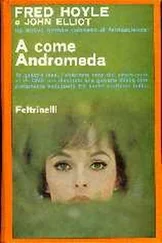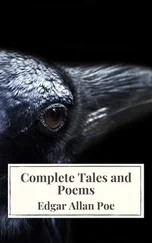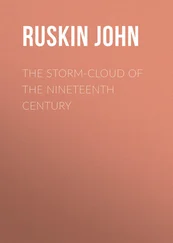Fred Hoyle - The Black Cloud
Здесь есть возможность читать онлайн «Fred Hoyle - The Black Cloud» весь текст электронной книги совершенно бесплатно (целиком полную версию без сокращений). В некоторых случаях можно слушать аудио, скачать через торрент в формате fb2 и присутствует краткое содержание. Жанр: Фантастика и фэнтези, на английском языке. Описание произведения, (предисловие) а так же отзывы посетителей доступны на портале библиотеки ЛибКат.
- Название:The Black Cloud
- Автор:
- Жанр:
- Год:неизвестен
- ISBN:нет данных
- Рейтинг книги:5 / 5. Голосов: 1
-
Избранное:Добавить в избранное
- Отзывы:
-
Ваша оценка:
- 100
- 1
- 2
- 3
- 4
- 5
The Black Cloud: краткое содержание, описание и аннотация
Предлагаем к чтению аннотацию, описание, краткое содержание или предисловие (зависит от того, что написал сам автор книги «The Black Cloud»). Если вы не нашли необходимую информацию о книге — напишите в комментариях, мы постараемся отыскать её.
The Black Cloud — читать онлайн бесплатно полную книгу (весь текст) целиком
Ниже представлен текст книги, разбитый по страницам. Система сохранения места последней прочитанной страницы, позволяет с удобством читать онлайн бесплатно книгу «The Black Cloud», без необходимости каждый раз заново искать на чём Вы остановились. Поставьте закладку, и сможете в любой момент перейти на страницу, на которой закончили чтение.
Интервал:
Закладка:
“Now try ten centimetres,” Kingsley commanded.
For the next twenty or thirty minutes the equipment was watched keenly, all comment silenced. The earlier pattern repeated. Very little reflection was obtained at first. The reflected signal then increased rapidly in intensity.
“Well, there it is. At first the signal penetrates the ionosphere. Then after a few minutes the ionization rises and we get complete trapping. What’s it mean, Chris?’ asked Leicester.
“Let’s go back upstairs and think about it. If Ann and Yvette will be kind-hearted and make another brew of coffee, perhaps we can do something towards licking this business into shape.”
McNeil came in while coffee was being prepared. He had been attending a sick child while the experiments had been going on.
“Why the air of great solemnity? What’s been happening?”
“You’re just in time, John. We’re going to run over the facts. But we’ve promised not to start until the coffee arrives.”
The coffee came, and Kingsley began his summing up.
“For John’s benefit I’ll have to start a long way back. What happens to radio waves when they’re transmitted depends on two things, the wave-length and the ionization in the atmosphere. Suppose we choose a particular wave-length for transmission and consider what happens as the degree of ionization increases. To begin with, for low ionization the radio energy streams out of the atmosphere, with very little of it getting reflected. Then as the ionization increases there is more and more reflection until quite suddenly the reflection goes up very steeply until eventually all the radio energy is reflected, none of it getting away from the Earth. We say that the signal saturates. Is that all clear, John?”
“Up to a point. What I don’t see is how the wave-length comes into it.”
“Well, the lower the wave-length, the more ionization is needed to produce saturation.”
“So while one wave-length might be completely reflected by the atmosphere, some shorter wave-length might penetrate almost completely into outer space.”
“That’s exactly the situation. But let me go back to my particular wave-length for a moment, and to the effect of rising ionization. For convenience in talking, I’d like to call it “pattern of events A”.”
“You’d like to call it what?’ asked Parkinson.
“This is what I mean:
1. A low ionization allowing almost complete penetration.
2. A rising ionization giving a reflected signal of increased strength.
3. An ionization so high that reflection becomes complete.
“This is what I call “pattern A”.”
“And what is pattern B?’ asked Ann Halsey.
“There won’t be any pattern B.”
“Then why bother with the A?”
“Preserve me from the obtuseness of women! I can call it pattern A because I want to, can’t I?”
“Of course, dear. But why do you want to?”
“Go on, Chris. She’s only pulling your leg.”
“Well, here’s a list of what happened this afternoon and evening. Let me read it out to you as a table.”
Transmission wave-length
Approximate time of switching on
Event
1 metre
2.45 p.m.
Pattern A taking approximately half an hour.
10 centimetres
3.15 p.m.
Pattern A taking approximately half an hour.
1 centimetre
3.45 p.m.
Complete penetration of ionosphere over a period of three hours roughly.
10 centimetres
7.0 p.m.
Pattern A taking approximately half an hour.
No transmissions from 7.30 p.m. to 9.0 p.m.
1 metre
9.0 p.m.
Pattern A taking half an hour.
10 centimetres
9.30 p.m.
Pattern A taking half an hour.
‘It certainly looks horribly systematic when it’s all put together like that,” said Leicester.
“It does, doesn’t it?”
“I’m afraid I’m not getting this’ — Parkinson.
“Nor am I,” admitted McNeil.
Kingsley spoke slowly.
“As far as I’m aware, these events can be explained very simply on one hypothesis, but I warn you it’s an entirely preposterous hypothesis.”
“Chris, will you please stop trying to be dramatic, and tell us in simple words what this preposterous hypothesis is?”
“Very well. In one breath — that on any wave-length from a few centimetres upwards our own transmissions automatically produce a rise of ionization which continues to the saturation point.”
“It simply isn’t possible.” Leicester shook his head.
“I didn’t say it was possible,” answered Kingsley. “I said it explained the facts. And it does. It explains the whole of my table.”
“I can half see what you’re driving at,” remarked McNeil.
“Am I to suppose that the ionization falls as soon as you cease transmission?”
“Yes. When we stop transmission the ionizing agent is cut off, whatever it may be — perhaps Bill’s electrical discharges. Then the ionization falls very rapidly. You see the ionization we’re dealing with is abnormally low in the atmosphere, where the gas density is large enough to give an extremely rapid rate of formation of negative oxygen ions. So the ionization dries up very quickly as soon as it isn’t being renewed.”
“Let’s go into this in a bit more detail,” Marlowe began, speaking out of a haze of aniseed smoke. “It seems to me that this hypothetical ionizing agency must have pretty good judgement. Suppose we switch on a ten-centimetre transmission. Then according to your idea, Chris, the agency, whatever it is, drives the ionization up until the ten-centimetre waves remain trapped inside the Earth’s atmosphere. And — here’s my point — the ionization goes no higher than that. It’s all got to be very nicely adjusted. The agency has to know just how far to go and no further.”
“Which doesn’t make it seem very plausible,” said Weichart.
“And there are other difficulties. Why were we able to go on so long with the twenty-five centimetre communication? That lasted for quite a number of days, not for only half an hour. And why doesn’t the same thing happen — your pattern A as you call it — when we use a one-centimetre wave-length?”
“Bloody bad philosophy,” grunted Alexandrov. “Waste of breath. Hypothesis judged by prediction. Only sound method.”
Leicester glanced at his watch.
“It’s well over an hour since our last transmission. If Chris is right we ought to get his pattern A, if we switch on again at ten centimetres, that is to say, and possibly at one metre also. Let’s try.”
Leicester and about half a dozen others went off to the lab. Half an hour later they were back.
“Still complete reflection at one metre. Pattern A on ten centimetres,” Leicester announced.
“Which looks as if it supports Chris.”
“I’m not sure that it does,” remarked Weichart. “Why didn’t the one metre give pattern A?”
“I might make some suggestions, but in a way they’re even more fantastic, so I won’t bother with ’em just for the moment. The fact is, and I insist it is a fact, that whenever we have switched on our ten-centimetre transmitter there has always been a sharp rise of atmospheric ionization, and whenever we switched off there has been a decline of ionization. Does anyone deny that?”
“I don’t deny that what has happened so far agrees with what you say,” Weichart argued. “I agree that no denial is possible there. It’s when it comes to inferring a causal connexion between our transmissions and the fluctuations of ionization that I dig my toes in.”
“You mean, Dave, that what we found this afternoon and this evening was coincidence?’ asked Marlowe.
“That’s what I mean. I grant you that the odds against such a series of coincidences are pretty big, but Kingsley’s causal connexion seems to me an out-and-out impossibility. What I feel is that the improbable can happen but the impossible cannot.”
Читать дальшеИнтервал:
Закладка:
Похожие книги на «The Black Cloud»
Представляем Вашему вниманию похожие книги на «The Black Cloud» списком для выбора. Мы отобрали схожую по названию и смыслу литературу в надежде предоставить читателям больше вариантов отыскать новые, интересные, ещё непрочитанные произведения.
Обсуждение, отзывы о книге «The Black Cloud» и просто собственные мнения читателей. Оставьте ваши комментарии, напишите, что Вы думаете о произведении, его смысле или главных героях. Укажите что конкретно понравилось, а что нет, и почему Вы так считаете.
